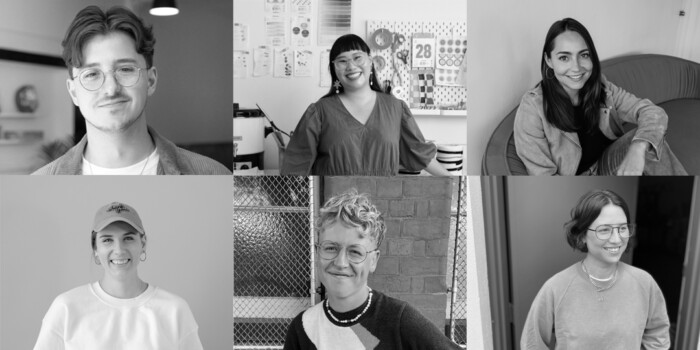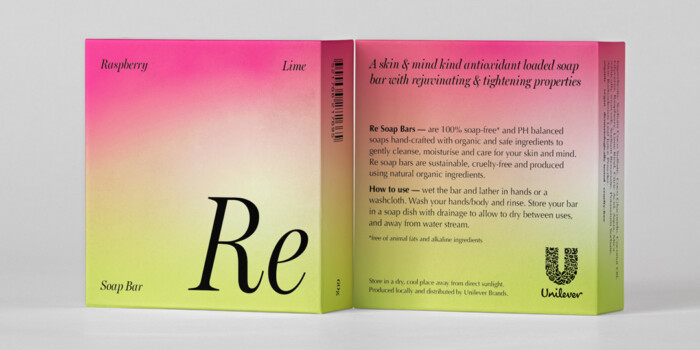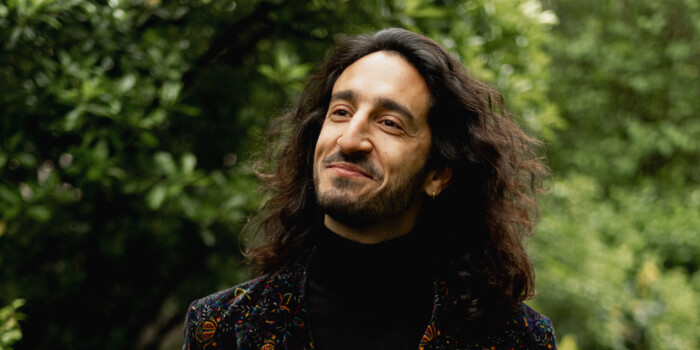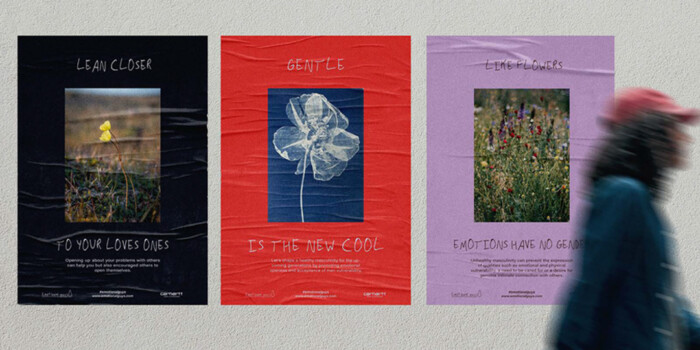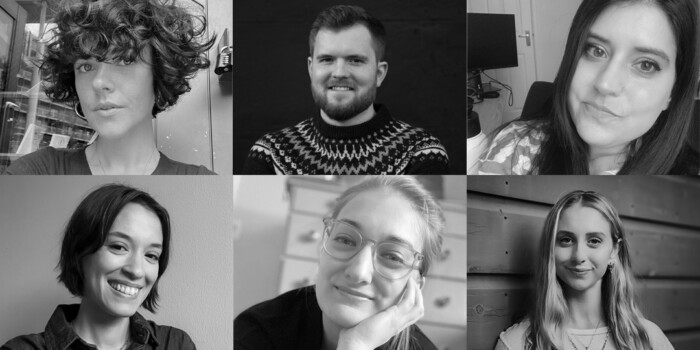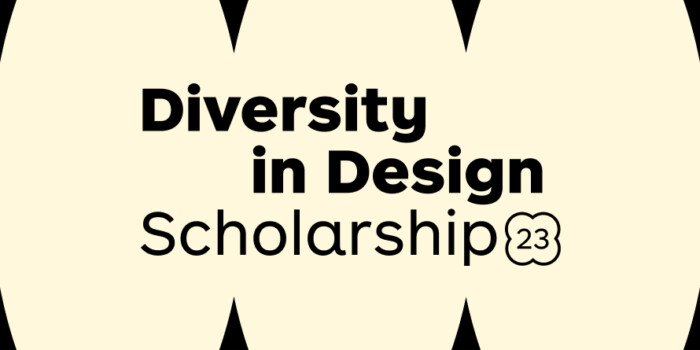New Portfolio Video! Meet Ray Wong, Designer at Oink Creative

Before Shillington, Ray Wong had dipped his toes into the creative industry by teaching himself web development, but while working at a small agency he felt that he lacked the ability to make his own visuals and explain his decisions. His time at Shillington equipped him with the skills to springboard his knowledge into a graphic design position, and since graduating in December 2017 he now works at Oink Creative in London.
We caught up with Ray to hear more about his time at Shillington, what he took from the experience and his advice to design students hoping to get the most out of their time in the classroom.
Before Shillington you were a self-taught web developer. What made you want to make the cross to graphic design and what attracted you to Shillington in particular?
I was lucky to pick up a few skills on my own whilst working at a small web design agency prior. There were no designers above me, so I had to become sufficient at creating visuals, but wasn’t confident in being able to explain design choices, let alone understand them properly. I knew I wanted to bolster my skillset and to expand my creative capabilities, which is when I found out about Shillington.
The thing that really struck me was that Shillington didn’t seem like another run of the mill course where you show up, sit in a class and just take notes.
This was a fully immersive, get-you-out-of-your-comfort-zone sort of thing. And when I finally started the course, everything was so hands-on; it was brilliant. But it actually wasn’t until a few weeks in that I realised that how much I loved graphic design in general, and wanted to be able to do much more. I still love web design, but I’ve now also discovered a passion for print design and editorial, packaging, branding and strategy. Shillington dipped my toes into absolutely everything, and I basically understood that I wanted a continuation of that once I’d finished the course.

Since graduating you’ve landed a job at Oink Creative, can you tell us a bit about the interview process you went through?
I had a few interviews before finally landing my job at Oink. All of them were impressed with my portfolio, which is a testament to the Shillington course and how well they prepare you for the high standards of the industry. At Oink, it was a two step process; I first met the directors to discuss my work and experience, and shortly after I was invited to complete a design challenge prior to my 2nd interview. I was offered a role the following day, which was incredibly exciting!
In general though, just being myself and showing my passion for design is actually what studios were most receptive to. Design is a very human thing after all; there may be processes and rules, but ultimately it’s about sharing, learning and communicating, and reciprocating that during the interview process was key.
What’s it been like working at Oink Creative so far—do you think Shillington prepared you for working in a real design agency?
The work that we do at Oink is incredibly varied, so no two days are exactly the same. I’ve had the fortunate opportunity to work on branding pitches, as well as creating conceptual visuals for movie posters, vinyl sleeves, and a little bit of everything in between. Being able to think on my feet, adapt to every brief, and ultimately be open to learning and trying new things has been essential.
Shillington really prepared me for the fast-paced nature of the industry, so I was able to hit the ground running.


Already having some skills as a self-taught web developer and with growing digital trends would you encourage more design students to embrace the digital side of our industry and include more of this in their portfolios?
I think it’s evident how increasingly multi-faceted the industry is becoming as new technology rolls out, so naturally graphic designers are likely to find themselves working on something purely digital, whether it’s a mock-up for a website or creating a user experience for an app. It’s all related; the core principles apply across the field, and the gap between traditional and digital design is bridged even closer when you consider how important the tech industry is, and how every commercial project will at some point try and reach audiences through mobile and desktop devices. So I’d definitely recommend including digital work, as it will help show a broader range of skills, even if it’s just a small part of a project rollout. A lot of the UI/UX wireframing and prototyping tools out there are incredibly intuitive as well, so it’s never been easier to jump in and start creating.

What was your experience of Shillington, any stand-out moments you’d like to share?
Shillington was actually quite transformative for me, which is something that I hadn’t initially expected at all. I think so many of the best experiences I had at Shillington were due to the people involved; the teachers who went above and beyond typical responsibilities, their passion and enthusiastic drive which then bled over to the students. I don’t think I would have done it without the collective community-like aspect of the course either, and that’s coming from someone who went into the course being a shy recluse. It made me evaluate so many things beyond just learning about design; it taught me how to treat it as way of life, and realigned me in such a way that curiosity was allowed to just take control over everything. Most of the time it was incredibly intense, but also immensely rewarding—it was hard to imagine how far we’d get 3 months down the line, but everyone was so supportive of each other and on our final day we all had this sense of, “we did it, we actually did it!”. We were all able to take a step back, look at our amazing output, and just share the immense feeling of pride over all the hard work.
I couldn’t say that there was any one particular stand-out moment for me; every day it was like something incredible was happening.


All of your portfolio projects from your time at Shillington were expertly considered and really well rolled out—what tips would you give to our current students about to embark on portfolio time?
Polish those ideas and moodboards; the better your planning is, the better your output will be, so don’t skim on the details. If you struggle for too long on an idea, don’t dwell on it—be flexible and move on. Find that inner spark for every project, because the more enthusiasm you have for it, the easier it will be. Talk to as many people as possible and gauge what your best routes are. And generally, just have fun—the weeks fly by, so make the most of it and savour every moment.
As a graduate you’re now part of our global Shillumni network! What advice would you give to our current students as they approach portfolio time and begin the job search?
Be courageous, Shillington is just the start. Don’t be afraid of putting yourself out there. See new things, meet new people, go to design talks, networking events, and keep up your visual diary.
Take on personal projects, side projects, or just make a brand for your cat.
Job seeking can be a gruelling process, so it’s important to keep yourself enthused and amused, and remind yourself of why you love graphic design. Treat each day like a brief, set your own goals and deadlines, and your efforts will pay off.
Huge thanks to Ray to sharing his experience. Be sure to check out Ray’s full portfolio and follow him on Instagram for regular updates.
Want to up-skill in graphic design? Study 3 months full-time or 9 months part-time at Shillington in New York, London, Manchester, Sydney, Melbourne or Brisbane —> shillingtoneducation.com.
Want to win some amazing prizes and stay in the loop with all things Shillington? Sign up to our newsletter to automatically go in the draw.

